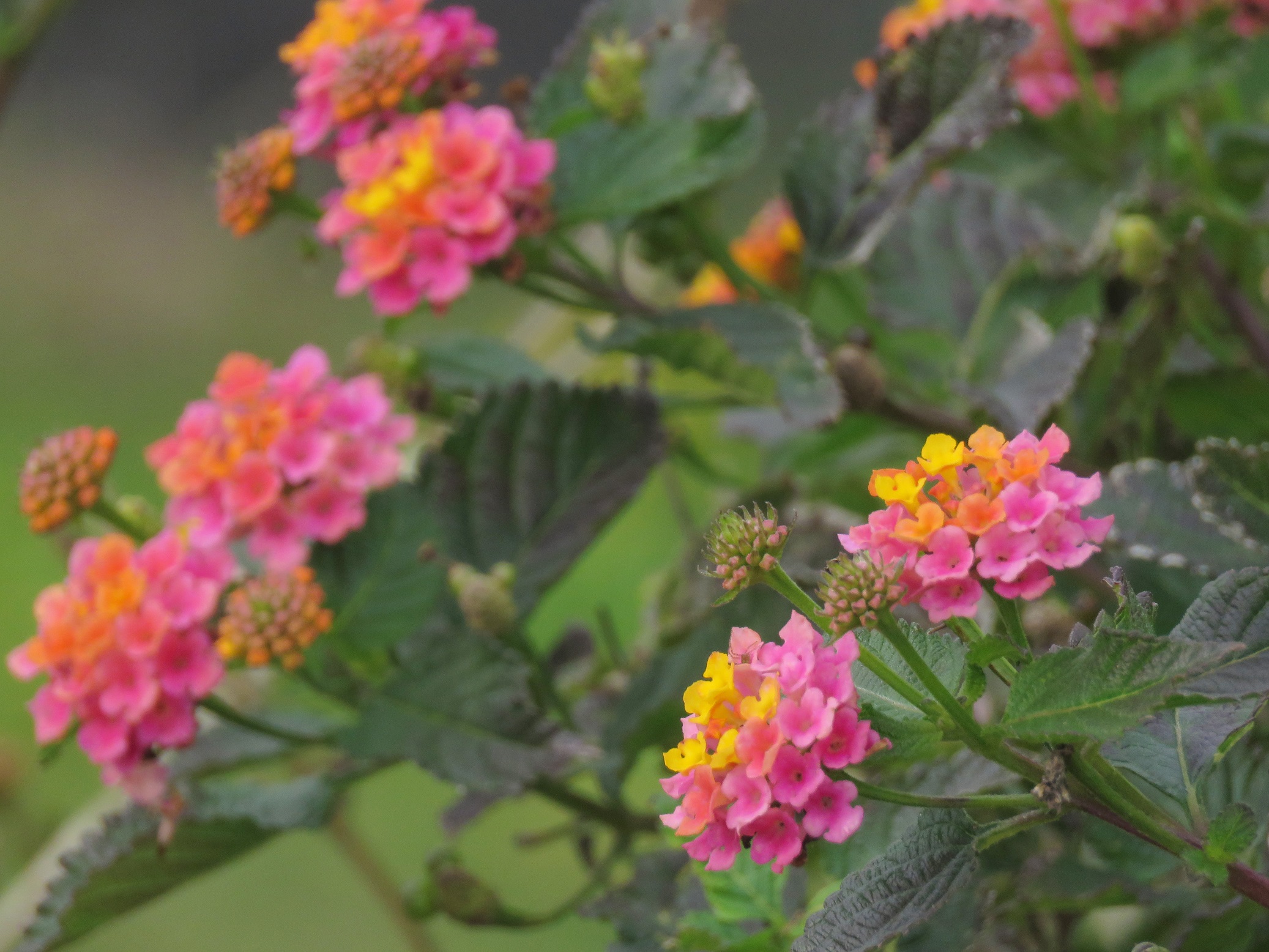
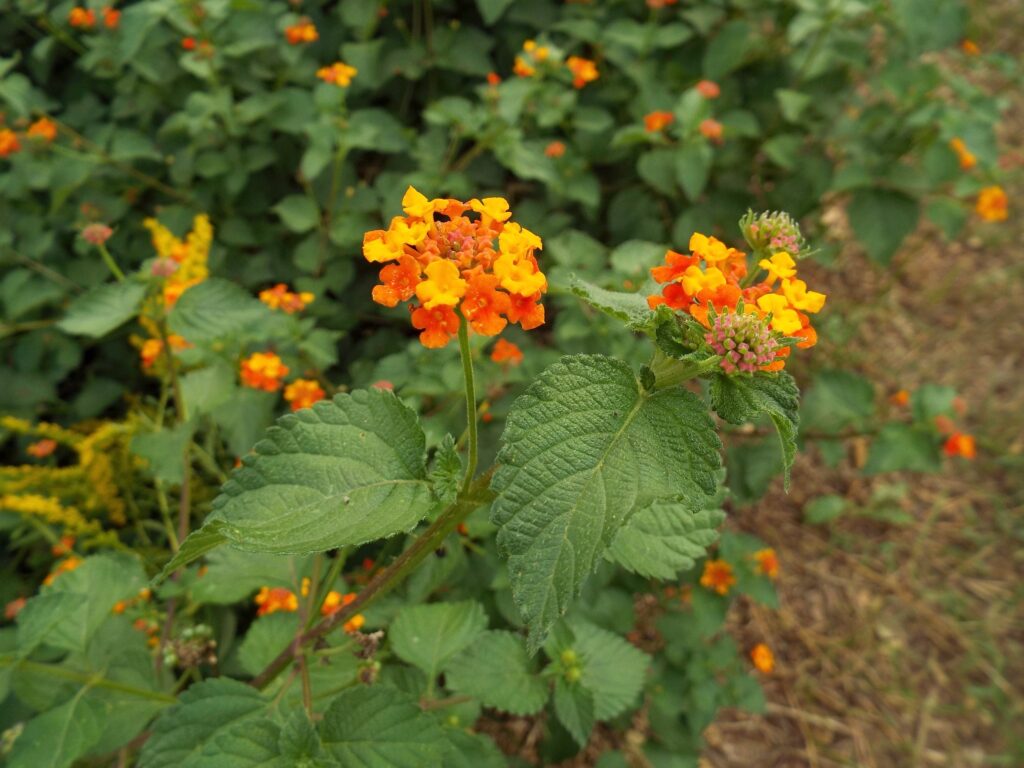
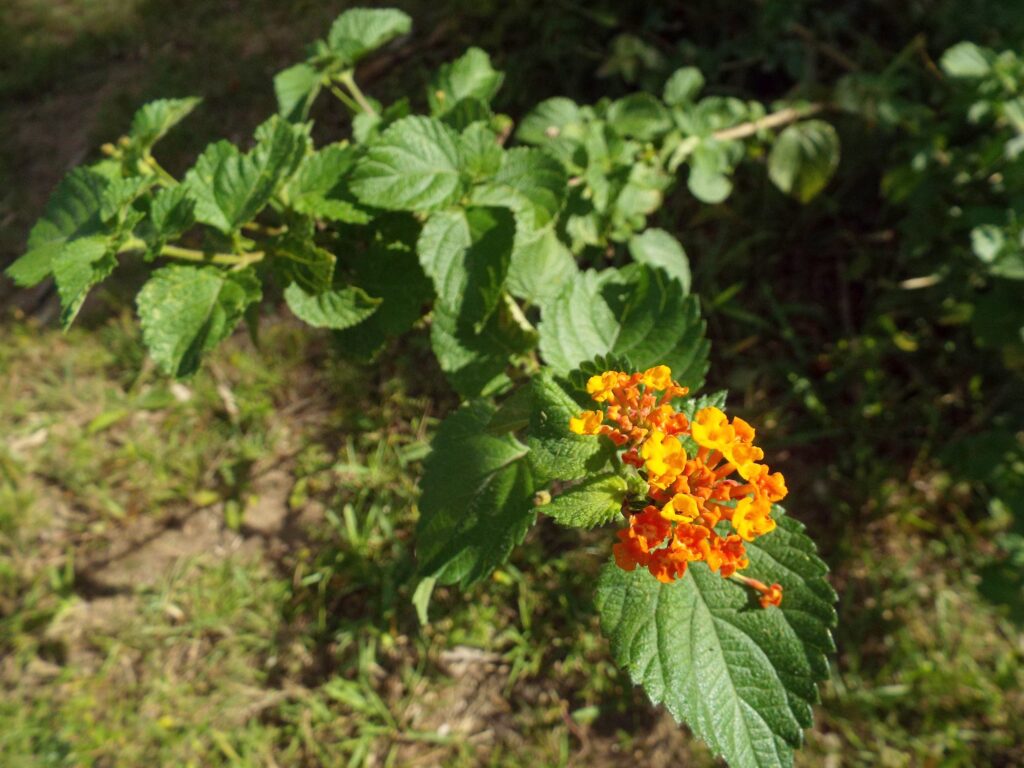

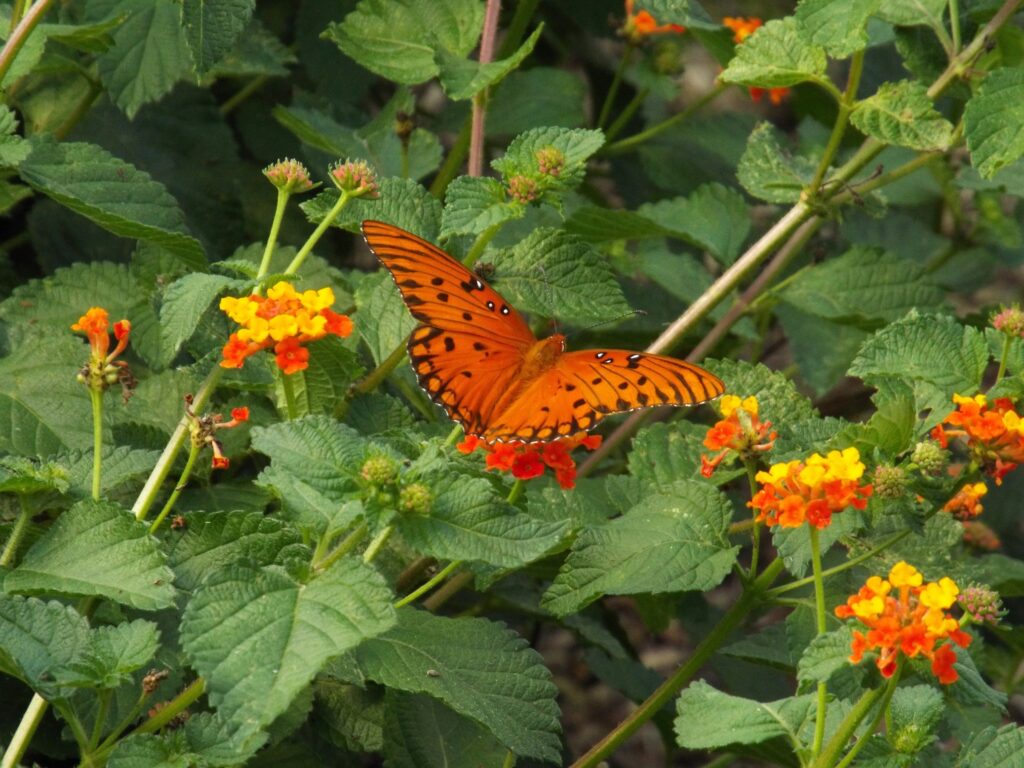
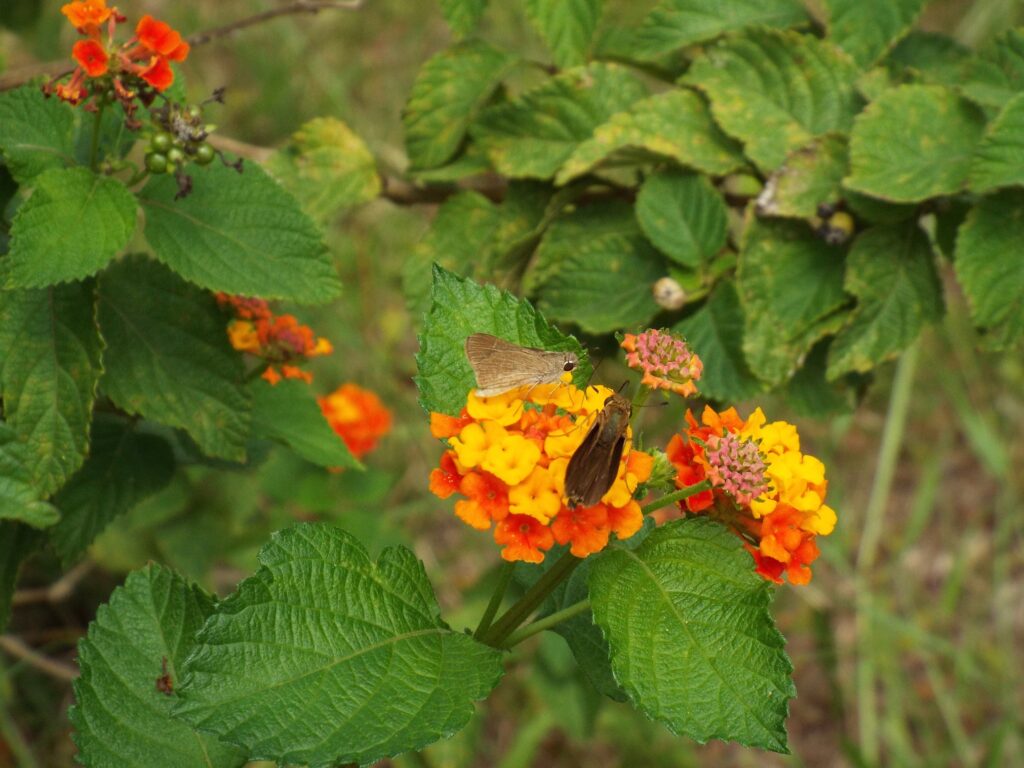
This week for Flora and Fauna Friday we have a popular flowering shrub with a two-faced existence, Common Lantana (Lantana camara).
Lantana is a genus of tropical, flowering shrubs in the Verbena family (Verbenaceae), which are native to the American tropics. Common Lantana, the species we’re focusing on today, which I’m just going to refer to as “Lantana”, is native to Central America and coastal South America. It’s not native to the United States but is naturalized to the Lowcountry. Common Lantana is a woody shrub with a round, dome-like growth habit. It’s very hardy and will tolerate drought, poor soil nutrition, and some salt intrusion. The bark of Lantana is flat and textured like sandpaper and colored a green-tinted tan. Stems can either be smooth or armed with prickles and irritating hairs. The leaves of Lantana are emerald green and spade-shaped with sunken veins and fine hairs. Lantana is a common ornamental here in the Southeast and comes in a wide array of varieties, hybrids, and cultivars. These cultivars differ primarily in their flower color but also in their size and vigor. Some cultivars can be quite large, reaching head height while others grow only knee high. Being a tropical plant, Lantana is not very cold hardy and will die back to its main trunk after a hard frost but will sometimes persist throughout our mild Sea Island winters. The flowers of Lantana are its most impressive feature. The flowers of different cultivars range in color from the vibrant gold and blood-orange of the more wild plants to the more contrasting lemon-yellow and hot-pink of some older varieties, to more modern white, yellow, and red cultivars. Apart from their ornamental value, Lantana is also a tremendous nectar plant for butterflies. Lantana will bloom from mid-spring clear until first frost and is a strongly preferred nectar plant by large and medium-sized butterflies. It’s also visited by hummingbirds and other nectar-seeking pollinators. The fruit of Lantana is a cluster of small, metallic blue-black berries. However, there’s another side to Lantana we don’t see often here on Edisto.
Common Lantana is an invasive species. It causes substantial economic and ecological damage in more tropical states, like Florida and Texas, where it robs nutrients from orchards, poisons livestock, chokes out native plants, and takes over grasslands. It has spread throughout the tropics of the world and causes significant ecological and agricultural damage in Africa, India, and Australia. However, here on Edisto Island and in the Lowcountry we are on edge of its naturalized range in the United States and our mild winters with consistent freezes keep Lantana from spreading rapidly and forming thickets in the state, except for open areas on our barrier islands and other edge cases. In this limited capacity, it does displace native Barrier Island species but at the same time it also has a somewhat balancing benefit to native wildlife. On the mainland it rarely causes issues in our Lowcountry ecosystems.